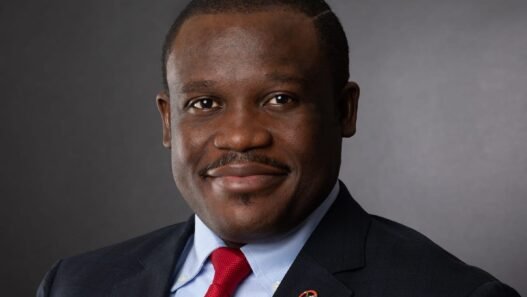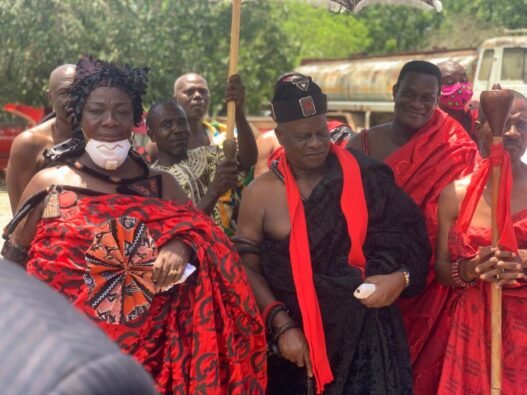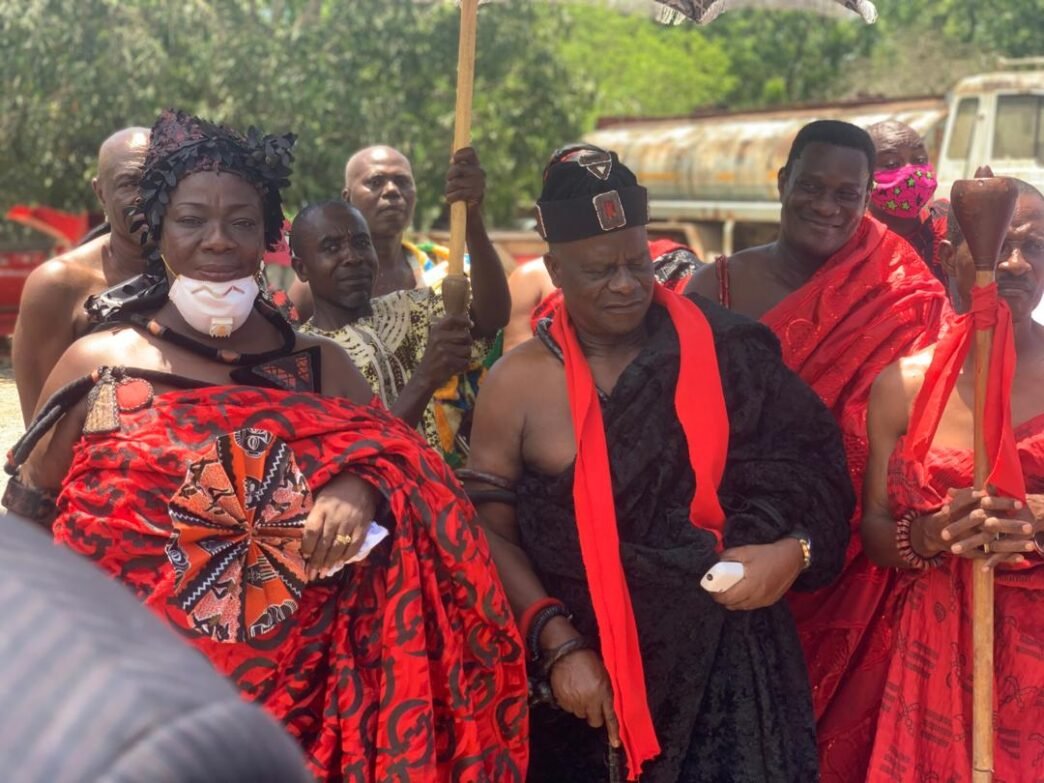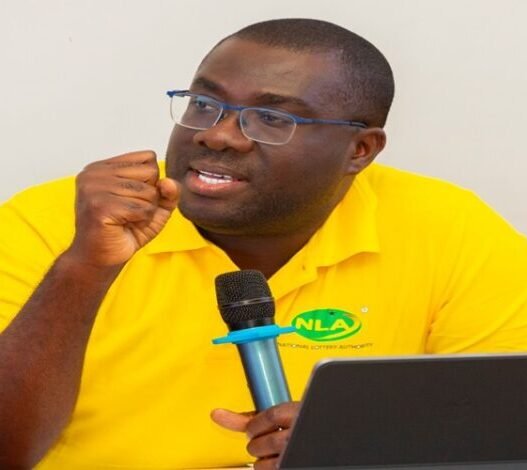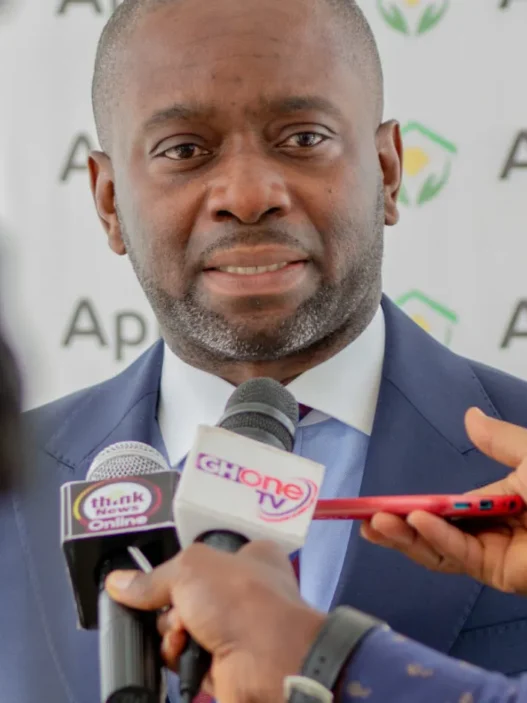A storm of controversy has engulfed the Gomoa Akyempim traditional area following the circulation of a video on social media. The footage shows the destooled Omanhene, Obrifo Ahunako Ahor Ankobia II, swearing in assistant chiefs to divisional leadership positions under the controversial banner of “Ahenfo Kuma.” This act has ignited widespread legal and cultural backlash, with many questioning whether it breaches traditional norms and governance protocols.
Questioning Authority and Legitimacy
The key issue raised by critics is whether the embattled Omanhene retains any legitimate authority to perform such duties after his destoolment by the Kingmakers, Elders, and Divisional Chiefs. The Omanhemaa (Paramount Queenmother), Obaatanpa Ama Eduwa I, who played a central role in his removal, has been vocal in condemning his actions. Many argue that his behavior challenges the authority of customs and traditional practices, which form the bedrock of leadership in the traditional area.
Legal experts emphasize that once a chief is destooled, they no longer hold any power unless re-confirmed by the House of Chiefs. As such, any decisions made during this period—such as appointing assistant chiefs—are considered void. This breach of protocol could have significant legal consequences and raises concerns about the stability of the traditional leadership system in Gomoa Akyempim.
The Events Leading to the Destoolment
The decision to destool Omanhene Obrifo Ahunako Ahor Ankobia II was the culmination of several controversial actions that undermined the values and customs of the Gomoa Akyempim traditional area. Some of the key issues that led to his removal include:
1. Relocation of Traditional Headquarters
The Omanhene’s decision to move the traditional headquarters from Gomoa Assin to Gomoa Buduattah, an area with little historical or cultural significance, sparked outrage. Many viewed this as an attempt to shift the political and spiritual center for personal gain, weakening the unity and identity tied to the original headquarters.
2. Neglect of Ancestral Rituals
For over two decades, the destooled Omanhene neglected the critical ancestral ritual of purifying the black stool, a ceremony vital for maintaining the spiritual continuity of the leadership. His failure to carry out this duty was seen as a deep betrayal of the ancestral trust and disrespect for cultural values.
3. Creation of Unauthorized Shrines
In another controversial move, the Omanhene established a shrine in Gomoa Buduattah, bypassing the sacred site at Gomoa Akyempim Palace. This action was perceived as an attempt to rewrite spiritual history and undermine the long-standing traditions of the traditional area.
4. Failure to Conduct Rites for Past Leaders
The destooled Omanhene’s failure to carry out the final funeral rites for past leaders, including the late Omanhen Okukutan Ahunako Acquah I and the late Omanhemaa Nana Adadzewa I, was seen as a significant violation. These rites are crucial in honoring the legacies of past leaders and reinforcing communal ties within the traditional area.
5. Dismantling of the Ngwabaesson Council
The Omanhene’s decision to dismantle the ancient Ngwabaesson (Divisional Council of Chiefs) and replace it with a self-appointed council was viewed as an autocratic move. This erosion of the traditional governance structure undermined centuries of collective leadership and weakened trust in the traditional system.
6. Exclusionary Governance
Under his rule, the Omanhene sidelined key stakeholders, fostering division and disenfranchising various factions within the traditional area. Critics argue that his exclusionary approach weakened the fabric of traditional governance, leading to greater fragmentation and conflict.
7. Rising Insecurity
Increased insecurity, particularly in Gomoa Fetteh, became another hallmark of his leadership. The rise of parallel power structures and blatant disregard for traditional governance protocols contributed to local conflicts, further destabilizing the traditional area.
8. Commercialization of Chieftaincy Titles
The destooled Omanhene’s indiscriminate awarding of chieftaincy titles to outsiders and individuals of questionable character further eroded the sanctity of these positions. This corruption was linked to several violent incidents, including the tragic murder of a soldier in Gomoa Nyanyano.
9. Intimidation and Landguard Activities
The use of intimidation and reliance on landguard groups under the Omanhene’s leadership created a climate of fear and instability. These tactics undermined the traditional role of chiefs as protectors of peace and guardians of communal welfare.
A Deepening Crisis
As the destooled Omanhene continues to defy his removal and engage in actions that further erode the traditional structures of Gomoa Akyempim, the crisis deepens. Legal experts warn that his continued defiance could lead to additional legal repercussions, while local stakeholders are calling for a return to collective governance based on the traditions that have long defined the leadership of the traditional area.
Conclusion
The actions of the destooled Omanhene, Obrifo Ahunako Ahor Ankobia II, known privately as Mr. Kweku Apatantor, have drawn widespread condemnation and sparked significant legal and cultural questions. His defiance of the established customs and practices of Gomoa Akyempim has caused a breakdown in the traditional governance system, contributing to a deepening leadership crisis. As the legal proceedings unfold, the traditional area remains divided, with many hoping for a resolution that restores order, upholds traditions, and reaffirms the rightful authority of traditional leaders.








